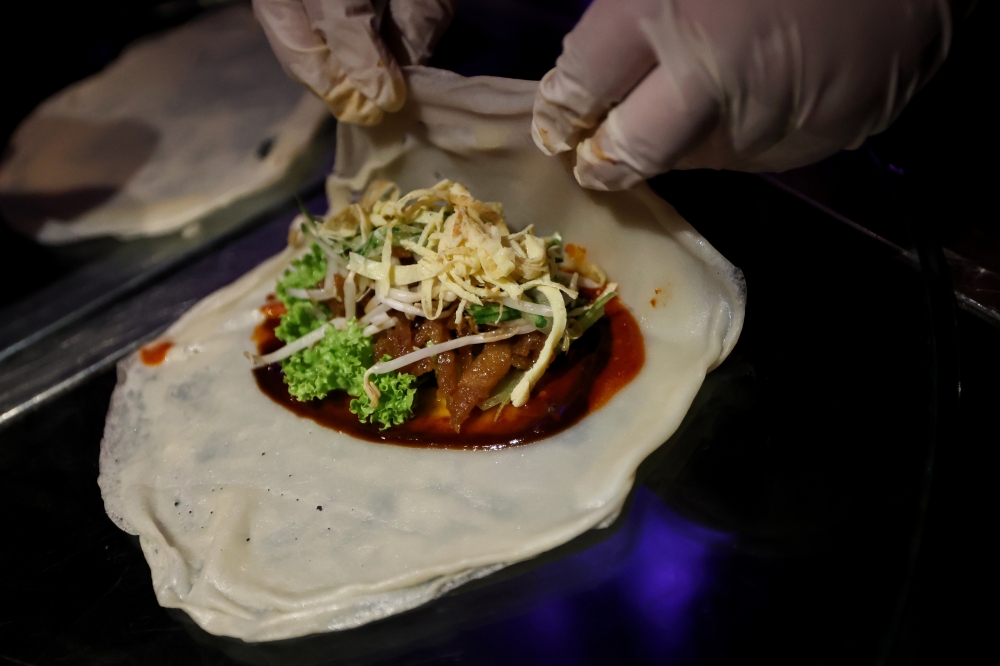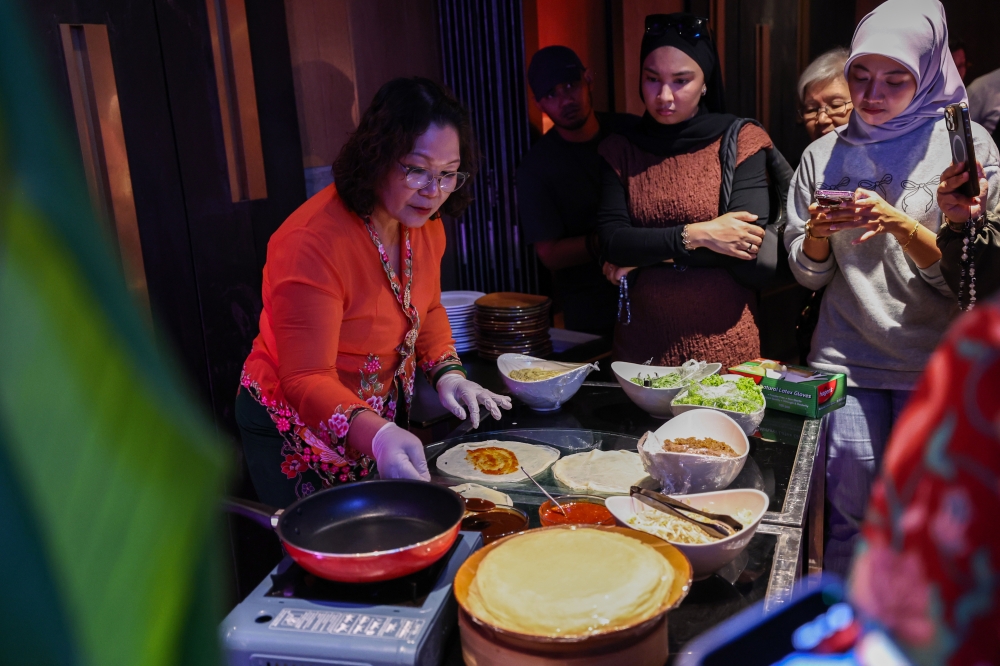SHAH ALAM, May 15 — At first glance, Nyonya popiah may resemble the typical spring rolls sold at street stalls or night markets.
But with its crispier skin, richer filling, and signature sambal and sweet sauce, this Peranakan delicacy tells a deeper story rooted in cultural heritage.
However, Jennifer Lee Choo Neo, the Cultural and Social Committee Member of the Persatuan Peranakan Baba Nyonya Kuala Lumpur dan Selangor (PPBNKLS) said the delicate wrapper and rich filling reflect generations of heritage from the Chinese Peranakan, or Baba, community.
“Nyonya popiah is more complex to prepare, with a wrapper made from wheat flour, tapioca flour, eggs, warm water, and salt. The batter is rested for 30 to 60 minutes for a softer, more flavourful texture — unlike regular spring roll wrappers, which use only flour and water.
With its crispier skin, richer filling, and signature ‘sambal’ and sweet sauce, this Peranakan delicacy tells a deeper story rooted in cultural heritage. — Bernama pic
“To create the wrapper, the batter is gently spread in a thin layer over a flat pan,” she said during a Peranakan Chinese cooking demonstration for media practitioners held in conjunction with the Nyonya Heritage@The Saujana Hotel programme, held here recently.
Lee, 58, said the filling is made from fresh ingredients such as jicama (sengkuang), cucumber, bean sprouts, omelette, fried tofu, and prawns, combined with sautéed fermented soybean paste (taucu) and garlic, resulting in a complex blend of sweet, spicy, and aromatic flavours.
As for the sambal, she explained that it uses either fresh or dried chillies, garlic, toasted wheat flour, and palm sugar (gula Melaka), while the sweet sauce is made from a mixture of palm sugar, flour, and a bit of soy sauce.
“Although slightly tedious to prepare, this delicacy is often a special choice for various events, including birthday celebrations or weddings,” said Lee, who is a third-generation Baba descendant.

Lee said the filling is made from fresh ingredients such as jicama (‘sengkuang’), cucumber, bean sprouts, omelette, fried tofu, and prawns, combined with sautéed fermented soybean paste (‘taucu’) and garlic, resulting in a complex blend of sweet, spicy, and aromatic flavours. — Bernama pic
Nyonya popiah is one of 15 traditional Peranakan Chinese dishes featured in the ‘Baba Nyonya Heritage’ initiative at The Saujana Hotel Kuala Lumpur throughout this month, symbolising a fusion of heritage cuisine and modern hospitality.
The Saujana Hotel Kuala Lumpur General Manager Jasmine Ong Li, said the campaign is not only aimed at introducing Baba cuisine to the public, but also serves as an important platform to revive time-honoured recipes rich in stories and cultural values.
She added that other featured dishes include buah keluak, lobak masak lemak (braised radish in coconut gravy), nasi kemuli, pai tee, stuffed cencaru (fish), ee pioh soup, pajeri eggplant, Nyonya sambal belacan, fried tamarind prawns, and various traditional kuih.

Jennifer Lee Choo Neo (left), the Cultural and Social Committee Member of the Persatuan Peranakan Baba Nyonya Kuala Lumpur dan Selangor (PPBNKLS) prepares Nyonya ‘popiah’ during a Peranakan Chinese cooking demonstration for members of the media, held recently in conjunction with the Nyonya Heritage@The Saujana Hotel programme in Shah Alam, May 14, 2025. — Bernama pic
She said each dish was carefully curated to ensure authenticity in terms of cooking techniques, secret ingredients, and traditional preparation methods inherited from the Baba community’s ancestors.
Meanwhile, PPBNKLS President Vivienne Lee @ Lianah Abdullah said to support this initiative, the association provided intensive training to the hotel’s culinary team, covering the ingredients and preparation methods.
“Our collaboration is grounded in a shared goal — to preserve and elevate Peranakan heritage for future generations. To us, this partnership is about safeguarding and reintroducing Peranakan heritage, because each dish carries meaning, not just flavour,” she said, adding that Peranakan Chinese cuisine is increasingly gaining popularity among the younger generation. — Bernama





